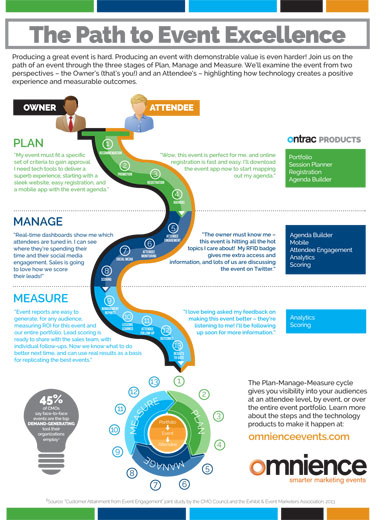Two Big Myths About Green Meetings
It’s time for meeting planners to stop putting green meetings initiatives on the back burner and start realizing that some of their initial assumptions about a green meeting might not be true.
I attended the Plan Your Meetings (PYM) Live event several weeks ago in Atlanta and had the opportunity to speak to a room full of both meeting planners and suppliers. Given my involvement with the Green Meetings Industry Council (GMIC), which was discussed in an earlier blog, I spoke about the importance of green meetings. While GMIC has provided easy access to the tools to help make a green meeting vision into a reality, I still sense hesitation amongst industry professionals so I’ve identified, with the help of my friends from GMIC, two big myths about green meetings.
Green meetings are too costly
This is one of the big claims that makes meeting planners hesitate to go green. They may say, “Getting budget approval for the event was hard enough, throwing a green meeting in the mix is just going to cost more money, which I don’t have.” Trust me, as an event planner I understand the need to stay within budget, but what if I told you green meetings could eliminate or significantly reduce those other high cost items that are currently eating up your budget.
For example, as planners we know how difficult it is to capture an attendee’s attention and to keep them engaged. Event attendees are glued to their mobile devices making this even more difficult. So, if that’s the case, why are we still printing conference material? Not only does taking most of your material mobile help reduce that printed material expense, but it’s also a reasonable way to minimize an event’s environmental impact.
Green meetings take too much time to plan
As an advocate for green meetings, I hear this one all the time. “I’ve got a huge to-do list already, adding green meetings to the fold will significantly increase my work load.” However, that’s not necessarily accurate. This is why GMIC’s Ask For It campaign was created, which you can learn more about online. We want planners to take advantage of the resources we have available and not have sustainability fall to the bottom of the list; the majority of the work is already done for you.
We recognize the time constraints on a planner already, so, there’s no need to overwhelm you with more tasks. We’re not saying you need to completely overhaul your event to achieve APEX/ASTM standards immediately. Again, what matters are the small changes you can make – if you have to print, print double-sided and use recycled paper, and set-up recycle stations at the event.
Best of the web
- Lista Casino Non Aams
- Non Gamstop Casino
- UK Online Casinos Not On Gamstop
- Best Online Casino UK
- Non Gamstop Casino UK
- Casino En Ligne
- Casino En Ligne
- Casinos Not On Gamstop
- Non Gamstop Casinos
- Non Gamstop Casinos
- Non Gamstop Casino
- UK Casino Not On Gamstop
- Non Gamstop Casinos
- Non Gamstop Casino
- Casino En Ligne France
- Non Gamstop Casinos
- Non Gamstop Casino UK
- Best Slot Sites UK
- UK Online Casinos Not On Gamstop
- Non Gamstop Casino
- UK Online Casinos Not On Gamstop
- Casino Not On Gamstop
- Non Gamstop Casino UK
- Casino Online Non Aams
- Casino Online
- Meilleur Casino En Ligne Belgique
- App Scommesse Calcio
- Jeu Sweet Bonanza Avis
- 코인카지노 주소
- плинко казино
- Casino En Ligne




